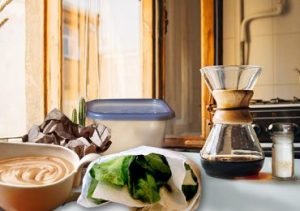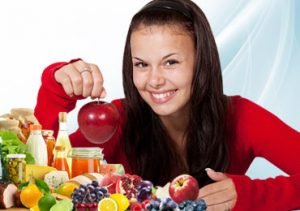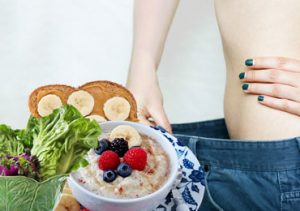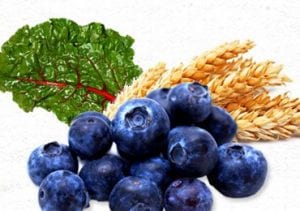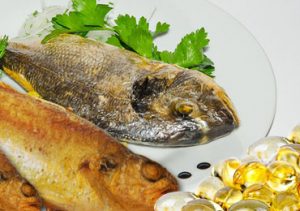Thinking about some tricks that will help you buy the best vegetables and fruits! There are quite a few of them. These tricks can help you to choose fruits and vegetables judiciously. In fact, if you are not aware of these tricks you may end up buying a stale fruit or an unsuitable vegetable lying on the shelf. Let’s get some simple rustic insight into buying various vegetables and fruits. Next time you will have most of the answers to your question of how to pick fruits and vegetables.
Quick Life Hacks on How To Pick Fruits And Vegetables
1. Celery
You can eat celery in so many ways. But whichever way you take it, you first need to have a bunch of great celery with young leaves. So look for dark green leaves among those on the shelf. These are young leaves. There should not be any spotting on the leaves either. Moreover, if the stalks have a yellowish hue and are soft to touch then turn to another bunch. The whole bunch should look crisp and green with dark green leaves.
Storing celery is tricky since it gets soft and slushy easily. Store it inside the refrigerator drawer kept for high humidity produce. This will ensure that the vegetable stays fresh for few more days.
2. Pumpkin
Selecting a good piece of pumpkin is easy if it is cut. If the edges of the outer core are mellow brown to deep brown color it shows that the pumpkin is ripe. Similarly, the inner core should be bright yellow in color which will again confirm that the pumpkin is ripe and nice.
Meanwhile, did you know the health benefits of Sage leaves?
3. Ridge gourd
Ridge gourds are best eaten young. As this vegetable becomes matured the fiber becomes prominent and it becomes unsuitable for eating. However, identifying young ridge gourds is a tricky thing. Can’t decide How to select vegetables like ridge gourd! Here is a trick. You need to look at the ridges to identify the best ones. In the young ones, the spacing between the ridges will be small meaning that the ridges should be crowded. Moreover, the green color also fades as the vegetable becomes matured. So go for one that is comparatively greener and has crowded ridges.
4. Spinach
Spinach is not only tasty but also a very nourishing vegetable. Identifying good spinach is not difficult. Look for bunches of smaller and dark green leaves. These leaves are also smaller in comparison to adult plant leaves. If you stick to these factors you can select the best bunch of spinach.
5. Cucumber
This is a vegetable that goes very well with both breakfast and lunch and can also be consumed on its own. The trick to identifying young and tasty cucumbers is to look at it carefully. There should not be any yellowish or brownish shade on it. A young cucumber is greenish. However, if the ends are dark green then the cucumber might have a bitter taste. So avoid cucumbers with dark green ends.
Cucumbers are sensitive to cold. So don’t keep them in the freezer. They are better staying on the countertop. However, you must have it within 3-4 days. Otherwise, it is going to lose its freshness.
6. Cauliflower
Cauliflower is great if it young and has a natural cluster of the flower. To identify young ones look at the base. It should have a greenish hue with succulent stalks. Moreover, the flowers should not be very compact. In fact, it should look like a loosely tied bunch of flowers. However, the flowers should be at a uniform level. If not, it is past its young age.
7. Bitter gourd
Bitter gourd is a very healthy as well as a tasty vegetable if consumed young. To identify young ones look at the skin. It should not look pale. It should have a lively greenish hue and feel tight. Dip your nail into the skin, the interior portion of the skin should look deep or dark green. It means the bitter gourd is young and tasty.
8. Radish
Young radish is not only healthy but also nice to eat when raw (though, if you take a big bite you are likely to get a strong pungent flavor and taste). But you need to take young ones. So take a look at the top. It should be bright green and fresh without any sign of browning or wilting. It should also be very hard. If you feel softness, just leave it there.
9. Potato
It is difficult to pick up unblemished potato. So, if you are unsure about How to pick up veggies like potato, here is a trick. You should try to at least leave those with distinctive blemishes. So if there is any green coloration on the skin you should leave it there. It must also be tight when feeling. And if you see sprouts on the skin take it easy, these are matured and not fit for eating.
10. Ginger
To select ginger you have to look for pungency. Older pieces are more pungent than younger ones. So go for thick skinned ones. These may appear to be dry but have more substance than those with light skin. However, while selecting older ones do take care to avoid ones with sprouts.
11. Eggplants
Two things you must look for if you are buying eggplants – tightness and color. It should be tight and your fingers should not be able to make a dent in it easily. Fresh and young eggplants are light purple in color while matured ones are dark purple.
12. Carrots
Carrots are mostly available in two varieties – orange and reddish. The orange colored one is the original variety and the reddish variety is a kind of improvisation on the orange variety. So if you are thinking about How to select vegetables like carrot then the trick is to select orange ones and not the reddish variety.
13. Eat seasonal vegetables
You must be aware of the seasonal vegetables. Buy those if you want to avoid stored and stale items.
14. Smell the item
If you are buying fruits you can ensure freshness of the fruits with a certain degree of accuracy by simply smelling it. It will smell rich and will have an inviting aroma. If the smell is too strong or pungent, it might have gone stale.
15. Watch for the color
Some fruits like banana, pineapple etc change color to yellow or golden yellow when ripe. You can see it for yourself if the fruit is ripe or not by simply taking a look at the color.
16. Avoid bumps and bruise
If there is any bump or bruise on the vegetables just avoid it. It might have been infested by some insect.
17. Crispy and firm veggies are good
If you want to buy leafy green vegetables then watch out for the crispness and firmness of the vegetables. If it has got crisp and firm leaves then the vegetable is fresh.
18. Don’t take all ripe ones
Most people are not aware of How to pick fruits and vegetables like tomatoes and banana. These produce ripe quite fast. So, buy ripe ones for today or next day and slightly unripe ones for later days of the week. This will ensure that the already ripe items don’t get stale.
19. Mushroom
Buy only those mushrooms in which the top portion appears to be closed. These are young and fresh ones.
20. Select the best kiwi
A ripe and fresh kiwi will be just soft with a taut skin. Take the fruit in your hand and exert just light pressure on it. If it gives in just slightly then it is ripe and fresh, but not overripe.
21. Pomegranate
Your answer to how to pick up fruits like a pomegranate is here. Though it is difficult to identify a ripe pomegranate, there is a trick to do this. Ripe pomegranates have a bright red color with a matte texture. Moreover, in a ripe pomegranate, the sides are usually flat due to the pressured exerted by the juice-filled arils inside. On the other hand, the unripe ones will have a nearly spherical shape.
Keep the pomegranates intact and inside the refrigerator. It will stay juicy and tasty for nearly a month.
22. How to buy a jackfruit
Jackfruit is one of the largest fruits available. The best trick to buy a jackfruit is to smell it. If you have smelt it before then you will know that it emits a strong, fresh and inviting aroma. If it is there then it is a fresh and ripe fruit.
Cut open the fruit and bring out all the fleshy pods. Pack it inside a plastic pack and keep it inside the refrigerator. In spite of this you need to consume the fruit within 5-6 days.
23. Artichoke
In fresh and young artichokes the globes are deep green. It will also have a tight leafy formation and will feel heavy for its size. If the tips have a brownish hue then it may have become too matured to eat.
24. Asparagus
Asparagus stands upright in a tray of water. Select only bright green asparagus which has a closed, compact and firm tip. It will have a rich green color throughout most of the spear. If the tips are open and spread out then just avoid it.
25. Beetroots
Fresh and ripe beetroots are firm and round with a slender taproot. It would also have a rich color and smooth texture over most of it.
26. Broccoli
Fresh broccoli stalks are tight and firm, but not tough. Moreover, the buds should be tightly closed and the leaves should be crisp and dark green. If you find a strong odor then just avoid it. It might be too matured to be eaten.
27. Brussels Sprouts
Fresh Brussels sprouts would have bright green color. The outer rims would be tight fitting ones and the body would be firm without any blemishes.
28. Cabbage
If you are wondering how to pick vegetables like cabbage then here is a trick. Cabbage leaves should be firm, crispy and fresh without any marking. It will have a greenish tinge all over. If there is any browning or even whitening of parts then just avoid it. The heads also should be firm and compact.
29. Corn
Fully ripe corns are bright green in color with a moist husk. The silk should also be moist and dark, but stiff. In a ripe corn, you can feel individual kernels by pressing against the husk gently.
30. Garlic
Garlic is a must for the kitchen. While buying this spice remember that a good one would be firm, big and plump. It will have silky skins with a paper like covering, If the skin is shriveled or soft then the garlic is not fresh.
31. Green beans
Green beans are very nourishing veggies. But, you should choose only slender ones that have a bright color and are crisp in appearance. The beans should also be free of blemishes.
32. Kale
Kale is a highly nutritious vegetable in the category of cabbage, Brussels sprouts etc. You must have it young. While choosing vegetables like Kale you should go for small leaves that are tender to touch and offer a slightly sweet taste.
33. Onion
While buying onion you might ask how to buy vegetables like the onion. Here is the trick. Good, juicy onions are heavier for their size, have a papery skin with no spotting or moisture. So look for these.
34. Garden peas
These nutritious veggies taste great when young. Look for pods that are smooth and firm. It would have a medium green color with no yellow or gray tinge. The pods should fill up the pea completely and there should be no empty space. You may also taste one to ascertain the quality. It should taste sweet.
35. Peppers
If you are thinking about how to pick up produce like peppers then here is a trick. It should have a smooth skin with no bruises or marks.
36. Radicchio
This vegetable has a bittersweet flavor and is available round the year. The firm white base is an indication of good condition. Moreover, there should be no browning or blemish at the edges. Those with smaller heads are better ones.
37. See if there is mismatch in color
If there is a mismatch in color between the stalk and the fruit then there is a chance that the fruit has been ripened artificially. It happens mostly with fruits like banana. The stalk may have a greenish tinge while the body appears to be yellow. Just leave it there.
38. Feel the weight
This is mostly true for all the root vegetables like potato, beet, turnip, sweet potato etc. The vegetable must feel heavy in comparison to the size. If not, don’t buy it.
39. Grapes
Thinking about how to select fruits like grapes? Just pick up a bunch of grapes. If you find some grapes at the bottom of the package, then the grapes are quite ripe and fit for consumption.
40. Strawberries
Overripe strawberries will have a strong smell with a bit of pungency. If it is there, don’t buy it.
From our discussion till now, by following the above mentioned information you can opt for some fruits along with vegetables. You are well informed in the choice of the best fruits or vegetables.







